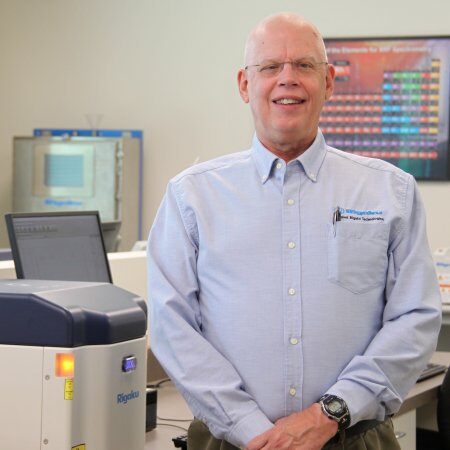Application Note BATT1037
Introduction
In a polymer electrolyte fuel cell (PEFC: Polymer Electrolyte Fuel Cell), a cathode layer and an anode layer are placed on both sides of the electrolyte membrane. Since the amount of platinum (Pt) catalyst on each electrode layer is different, each layer must be managed separately. Conventional control methods require each surface to be measured separately, resulting in a large workload and time cost. X-ray fluorescence analysis is an effective method for efficiently solving these problems because it has high penetrating power, is nondestructive, and can simultaneously evaluate the amount of Pt adhered on both surfaces in a single measurement.
Elemental analysis
- Analysis: Fuel cell
- Use: Quality assurance
- Analyzed materials: Pt as catalyst
- Analysis method: Standardless FP method
 Figure 1: Schematic diagram of measurement
Figure 1: Schematic diagram of measurement
Table 1: Analysis results for each aspect
[mg/cm²]
| Measurement surface | A-side | B-side |
| Analysis value | 0.201 | 0.42 |
| Design value | 0.203 | 0.405 |
| Relative error (%) | 1.0 | 3.7 |
Conclusion
Both sides (A-side and B-side) of the electrolyte membrane sheet coated with platinum-loaded carbon electrode were measured for 60 seconds using X-ray fluorescence of platinum and quantitatively analyzed by the thin- film FP method. As shown in Table 1, the analysis results for each measurement point agreed with the design values for each surface within ±5% relative error, confirming that the platinum loading in this film formation process was properly controlled.

